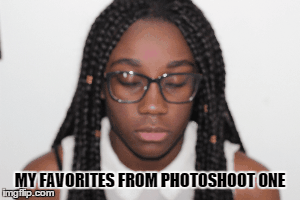In addition to asking my focus group open questions using popwerpoint, I had also given them each a questionnaire that I wanted them to fill out. The questionnaire I had given my participants simply just expanded on the questions I had asked them during my powerpoint, in addition to expanding on my powerpoint I had also featured new questions which i was planing on using as research to begin to flesh out my narrative of my teaser trailer as well as understanding which features and conventions that my audience response to the best.
From my questionnaire I had gained more insight on my audience than I had from the focus group powerpoint is self, I am planning on using the information I had gained to further convey more coursework to the level of authentic and professional horror film trailers.
Transcript
In my focus group I had featured an equal amount of each
gender. I had chosen three girls and
three boys to participate, I did this because I wanted to appeal to a mutual
demographic and wanted both genders opinions on each of my stimuli I found that
boys frequently gave short and quick responses to my stimuli whilst girls gave
more developed responses, this could connote that the female half of my
demographic will be harder to carter to.
|
What is your age group?
|
Bellow 15
|
0
|
15-16
|
1
|
17-18
|
2
|
19-20
|
2
|
21-22
|
0
|
23-24
|
0
|
25
|
1
|
Above 25
|
0
|
For my focus group I had got a wide range of people of all
ages, must of the females in my focus group tended younger whilst must of my
males tended to be older, in total I had one 16 year old, one 17 year old, one
18 year old, two 19 year olds and one 25 year old.
I believe
that having the wide age range in my focus group in will help me relate more to
the members of my audience of different ages.
|
What is
your favourite sub-genre?
|
Action horror
|
1
|
Body horror
|
0
|
Comedy horror
|
4
|
Gothic horror
|
0
|
Natural horror
|
1
|
Psychological horror
|
2
|
Sci-fi horror
|
2
|
Slasher films
|
1
|
Splatter films
|
1
|
Zombie films
|
2
|
The majority of the responses from my focus group had stated
that their favourite sub horror genre, I could reflect this piece of research
into my final product by making my horror trailer a comedy horror. Due to my
lack of knowledge on the comedy horror genre I will need to do intensive
reteach into the conventions of the genre to properly carter to my audience.
Drawn in
second place for my focus group favourite genre is Psychological horror, Sci-fi
and Zombie horror and closely followed by Action horror, Natural horror, Slasher
films and Splatter films.
For my question 4 I had asked my focus group why they
enjoyed each of their favourite sub-genres. The general response I gained
stemmed from people explaining why their enjoyed the comedy sub-horror the
best. One of the responses I got for question four was “Because it is funny
& it makes the film less scary” most of my responses went along the lines
of this.
Question 5 was quite an open question; I had featured this question
in my questionnaire to use as a stimulus for the narrative of my teaser
trailer. The responses I had gained from my focus groups were more along the
lines of my participants stating the jump scares were the scariest part of the
trailer closely followed by the ending. I can apply this knowledge to my
coursework by being sure to use conventions in my final teaser trailer, I also believe
that this will greatly increase the authenticity of my coursework because it
greatly reflects the conventions that are apparent in blockbuster teaser
trailers.
To help further flesh out the narrative of my teaser trailer
I had asked my focus group participant whether they preferred horror films with
male or female protagonist. The results I got from this particular question was
certainly more female centric as 5 out of my 6 participants stated they would
prefer a female protagonist whilst the reaming participant stated he would
prefer both a female and male protagonist for my teaser. To reinforce this
convention into my final teaser trailer I would need to briefly research into
the horror films that include a female protagonist and the different conventions
that come hand in hand with having a female protagonist.
In question 6 I had asked my focus group why they chose
their particular answer for question 6, the female majority of my focus group
had stated that they preferred a female protagonist because they find that the
hero is more relatable that way and the narrative is also more “suspenseful”,
whist my male majority had just stated that having a female protagonist is the “norm”.
The general reaction of my male participants could be credited to the male gaze
theory; theory that states all media outlets created to be seen through a heterosexual
male eyes.
For question to I had asked my participants another question
to help me further flesh out my narrative. The response I had gained from this
question was just generic horror movies settings; to list a few there was
haunted houses, graveyards and hospitals. There is not much to analyse from
this question apart from the fact that it helps me when I’m looking for filming
locations.
































